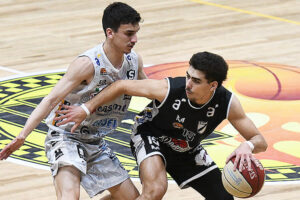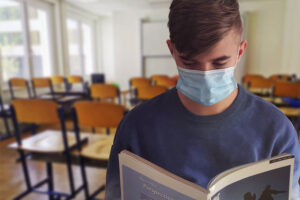Alfredo Cahe, at 77, speaks of Diego Armando Maradona with knowledge of the facts. He was her doctor for just over three decades. After the death of the Ten, he had no qualms to say his thing, to warn that the star “could have been saved.” And this Wednesday he ratified it in court, when he testified as a witness in the case investigated by a team of prosecutors from San Isidro.
“From what emerged from the autopsy, death was caused by heart and kidney failure. That result it was totally avoidable. With proper monitoring and control, it was avoidable, “said Cahe.
The doctor, who had the former soccer player as a patient between 1978 and 2009, affirmed that the house of the country San Andrés de Tigre, where Maradona died on November 25, “was the least indicated, because he must be in intensive care with control of neurosurgeons, therapists, with constant and continuous heart control. It was the only option ”.
Regarding what kind of controls a patient like Maradona should have, Cahe answered that “due to his heart condition, he obviously had to be checked every day, every four or six hours at the most.”
The former general practitioner of the “Diez” also stated to the prosecutors that “it is very simple to detect that there was negligence“And that from his point of view” was never controlled. “
He pointed out that this negligence “was basically due to the lack of control and the non-intake of cardiac medication” and ruled that “Diego had to have permanent clinical medical control.”
Cahe also referred to the difficulties he encountered in seeing Maradona when he went to visit him at the Olivos Clinic – where he underwent neurosurgery – and the little dialogue he had with Luque, of whom he said: “He (for the accused) He never expanded with me as a doctor or gave me information despite my requests, vague answers every time I wanted to insist with a question regarding care ”.
“Leopoldo Luque’s attitude was not normal, everything was very improvised. The abnormalities are very gross at least from my point of view, “he added.
Diego Maradona. (AP Photo / Natacha Pisarenko, File)
In addition, he explained that when he was the family doctor and Maradona had some decompensation they isolated him from the “environment” and had “permanent nurses and therapists” because they knew that “they were not going to give him drugs and they were going to take care of him.”
In the section of his statement that compromised the psychiatrist Cosachov, Cahe maintained that “psychiatric medication, if it is the one that transcended, squeezed his heart”To Diego.
And he again criticized the place where the death occurred, saying that “the house where he was housed if it was not an intensive therapy room, should have at least one defibrillator, which currently comes all equipped with an oxygen tube and a permanent nurse” .
“He had to be constantly monitored and obviously it didn’t happen. It is not coherent to take him out of a sanatorium like IPENSA, take him to a clinic and then home. In other words, the quality of care and controls was decreasing despite his delicate state of health. This is clearly noticeable ”, added Cahe, according to Telam.
Maradona, the greatest figure in the history of world football, died at the age of 60 on November 25, 2020 at noon, in a house that his family had rented in the private neighborhood of San Andrés, Tigre, two weeks after his discharge. from the Olivos Clinic, where he had undergone neurosurgery for a subdural hematoma in the brain.

Agustina Cosachov, in a medical report about Maradona at the Olivos Clinic. (Photo by JUAN MABROMATA / AFP)
The autopsy determined that he died as a result of “acute lung edema secondary to exacerbated chronic heart failure” and discovered “dilated cardiomyopathy” in his heart.
According to the results of the toxicological studies carried out, Maradona did not have alcohol or illegal drugs in his body, although they did detect psychotropic drugs.
The focus of the criminal investigation is to determine if home confinement was adequate for a patient like Maradona, if there was medical malpractice and if the death of “10” could have been prevented.
EMJ











